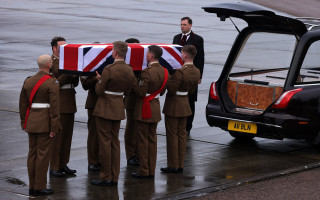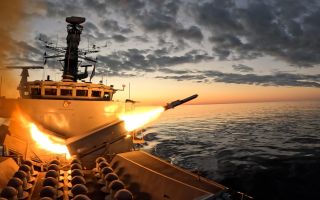Navy
MoD Denies Money Shortage Causing Delays In New Frigates
The Ministry of Defence has denied that a shortage of money is behind delays in the construction of eight new Type 26 frigates for the Royal Navy.
There is still no start date for the building of the Royal Navy’s new anti-submarine warships, with the deal for the Type 26 Global Combat Ship still under negotiation.
That's despite a date being set for the decommissioning of Type 23s, the ships it will replace.
There are fears that if work doesn't begin soon, the Type 23 Frigates that are due to be replaced will be decommissioned before an alternative is available.
Former First Sea Lord Admiral Lord West last month told the House of Commons Defence Committee that cutting steel on the new ships on the Clyde had been put back from 2016 because "there's almost no money available this year, and we are really strapped next year".
But the MoD's chief executive for equipment Tony Douglas told the committee on Wednesday that no start date had yet been set because design of the warships was only 60% complete.
And defence minister Harriett Baldwin denied that suppliers involved in the £8 billion programme had been told to "mothball" their contributions for up to three years.
Defence committee chairman Julian Lewis warned that delays in getting the state-of-the-art warships into service could end up costing money, as the operating life of the Type 23 craft they are replacing may have to be extended. Dr Lewis said:
"It's hardly best value for money to penny-pinch now and then end up spending something like 50-60% more on the project later, as happened with the aircraft carriers."
Industry insiders and experts had told the committee that there was a shortfall of around £750 million in the sums needed to press ahead with construction, he said, adding:
"We believe that if the money was there, this programme could start very soon."
But Mr Douglas said that cash was not the issue, as the MoD was still negotiating with BAE Systems over the final design of the ship's communications systems and computer networks.
Some £1.8 billion had already been committed to long lead-time elements of the project, he said, adding:
"If you were building an extension on the back of your house, you wouldn't get it priced if it was only 60% designed."
"We are in a good place right now, but with 60% design fixity, this is about driving it to closure, which is the road we are on."
Mr Douglas declined to say when the government would be in a position to name a start date for construction, but said it should come in "the relative short term".
First Sea Lord Admiral Sir Philip Jones told the committee he was "entirely comfortable" with progress on the Type 26.
He pointed out that in the past the Navy had rushed through the design of communications and computer systems and "paid the price in operational terms", as the technology was developing so quickly. He told the committee:
"What we are working on now is the maturity of the design, the readiness of the industrial partner to be able to build it in the way we want to build it, the way it will be sequenced with other types of ship under the National Ship Building Strategy."
"It is not that we are not ready to build it, it is not that we don't have the money to build it, or that we haven't already committed substantial amounts of money for long lead items. We are just optimising with the industrial partner the right way to go into contract. I am comfortable with that."
Dr Lewis warned: "If it turns out costing a lot more because we didn't start it as early as we could have done with a bit more cash at this stage, you will understand that the public won't be satisfied."









